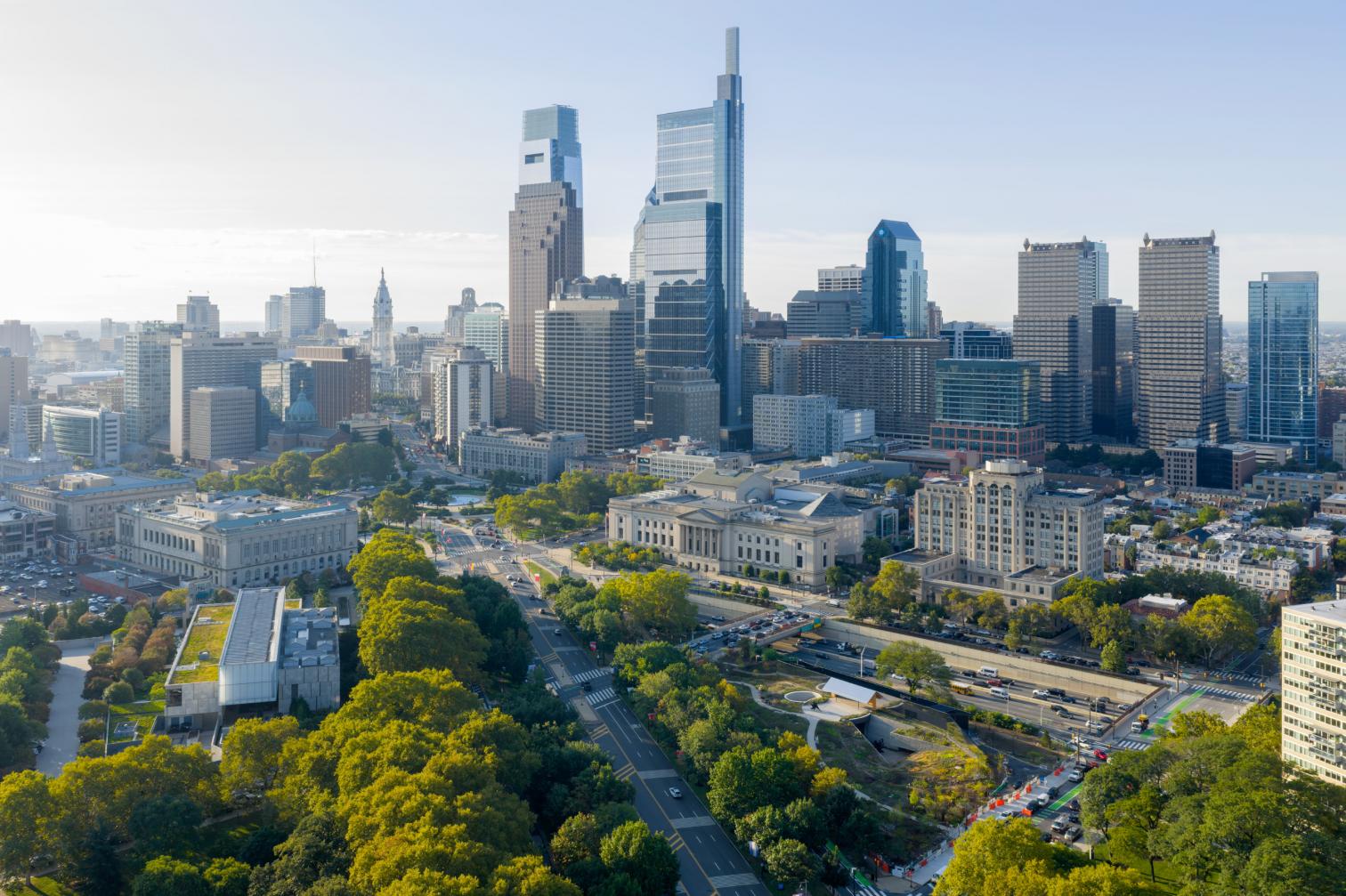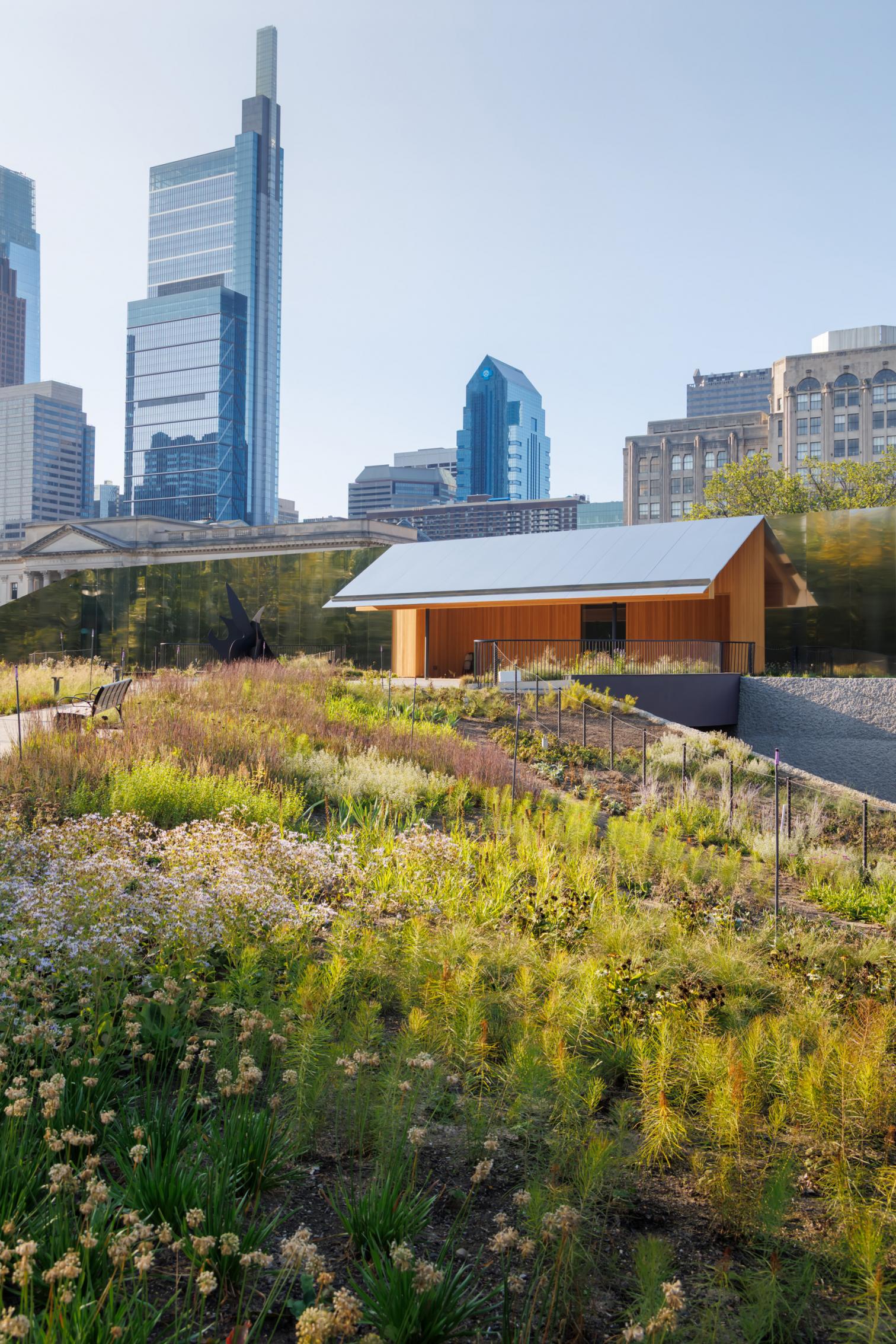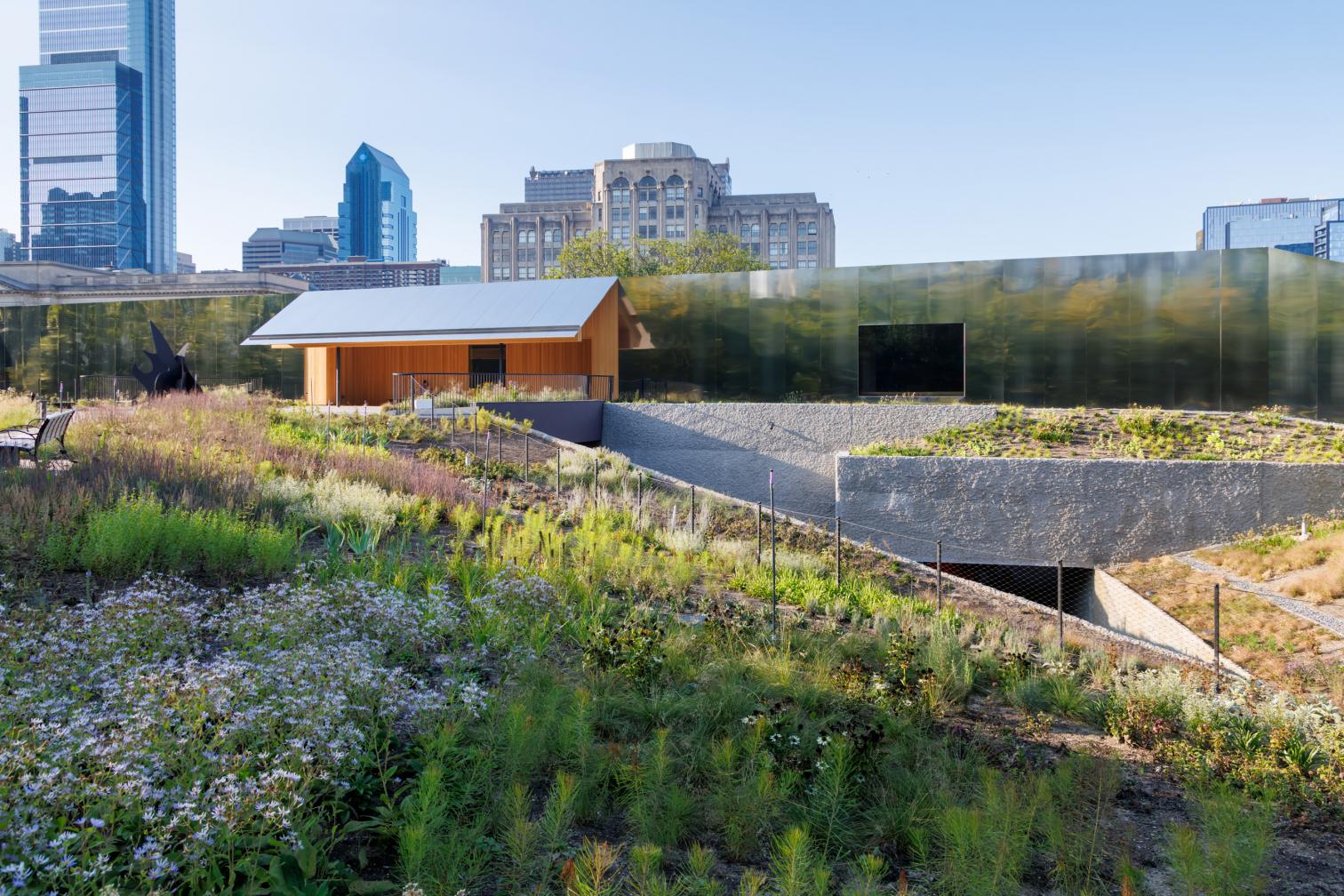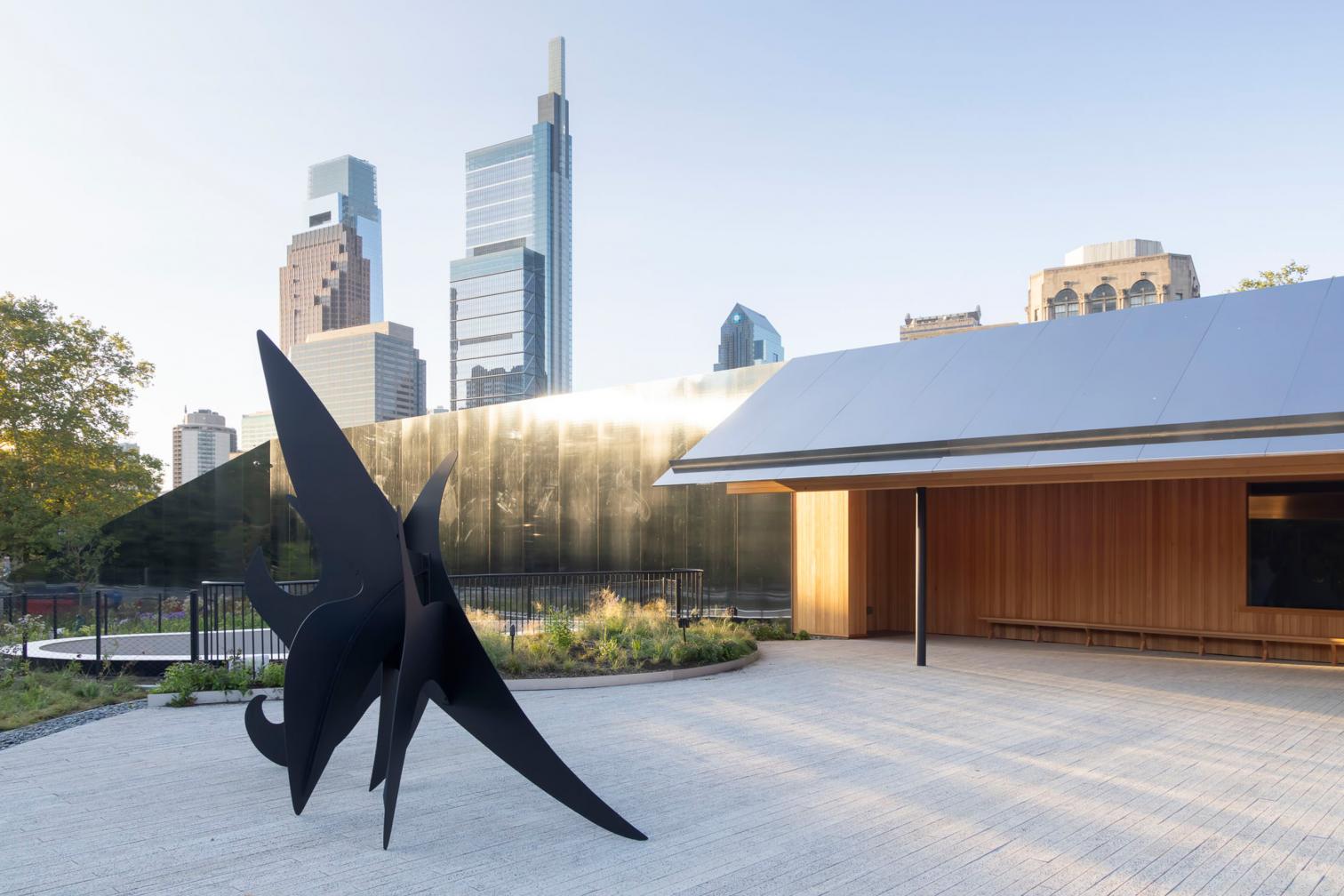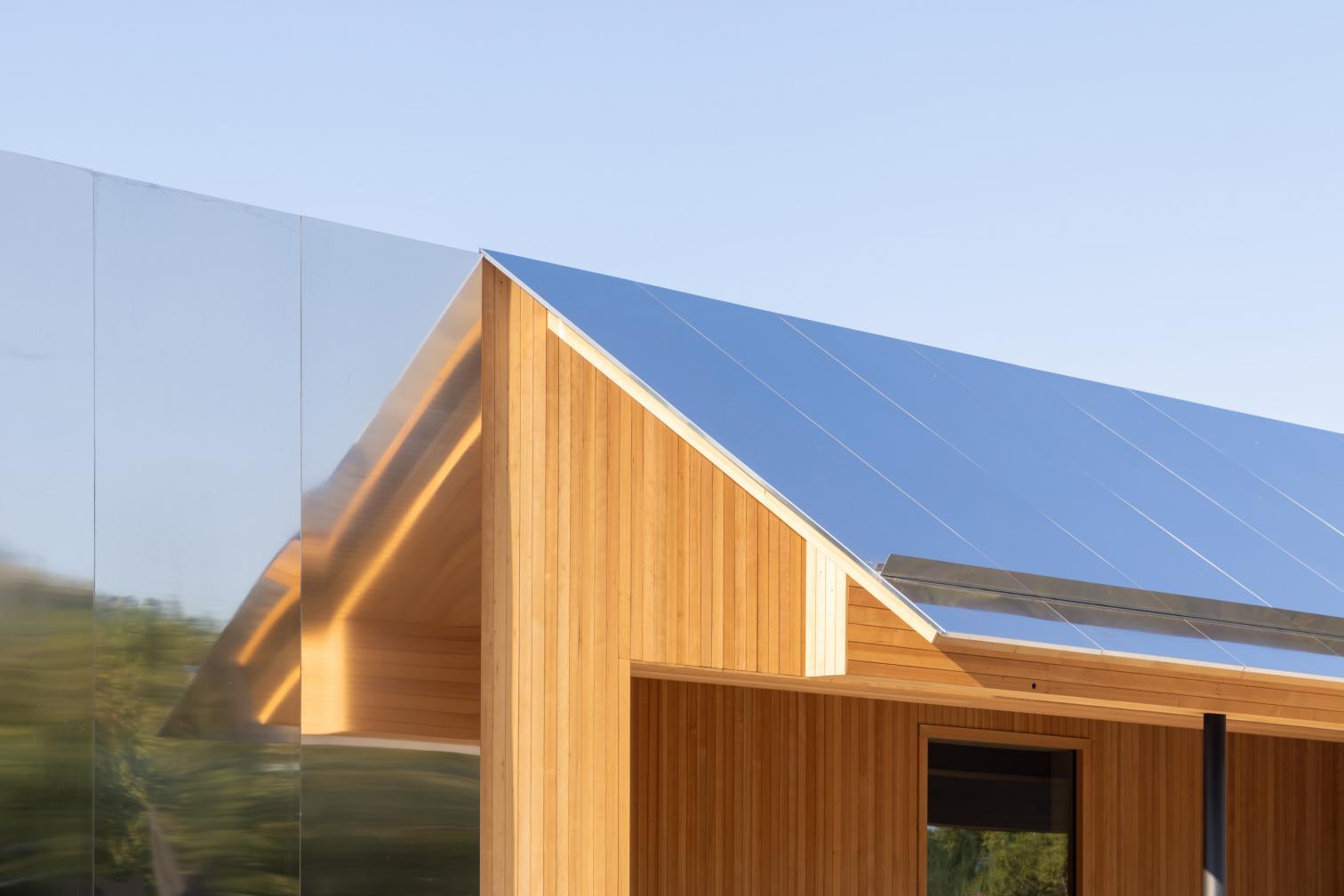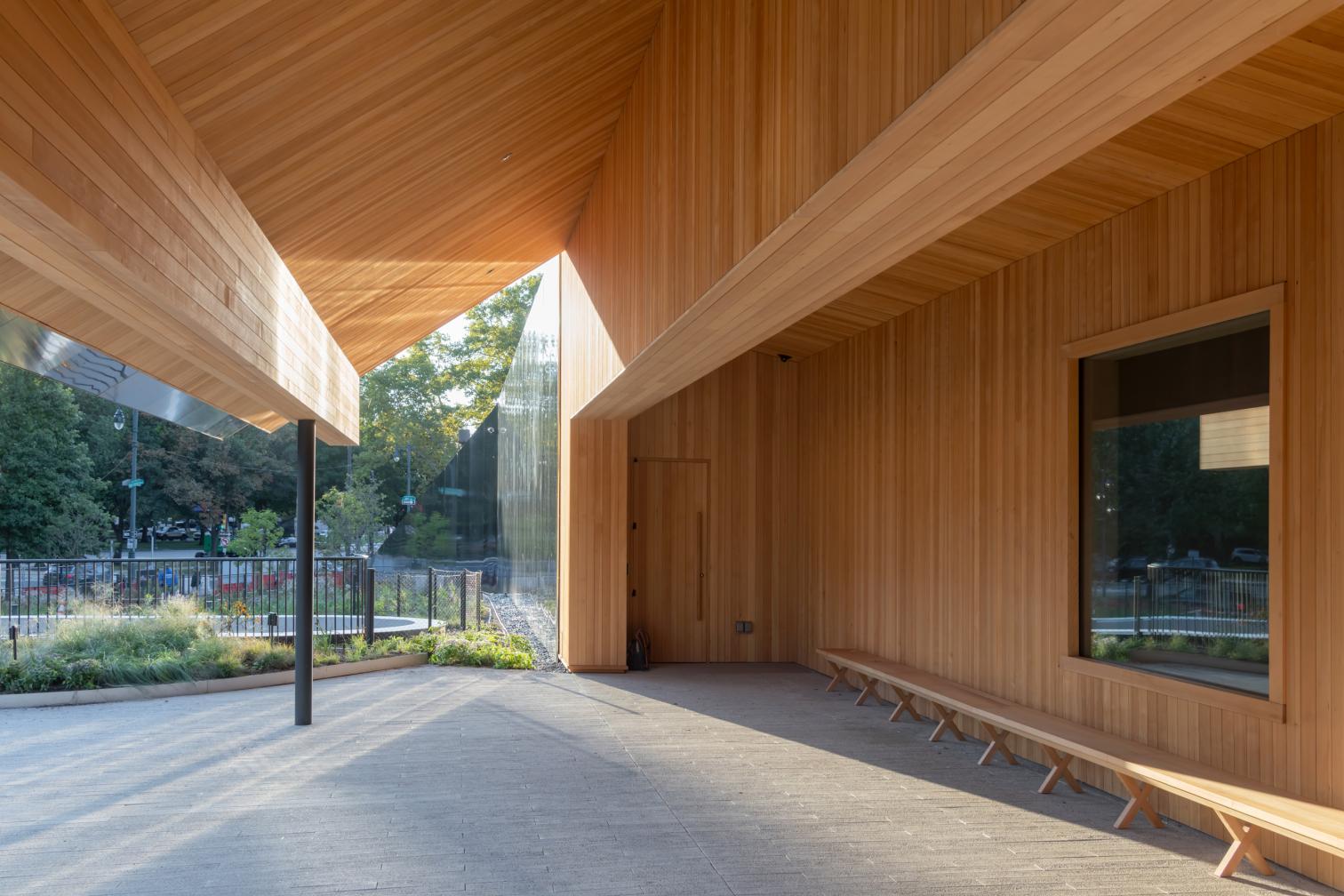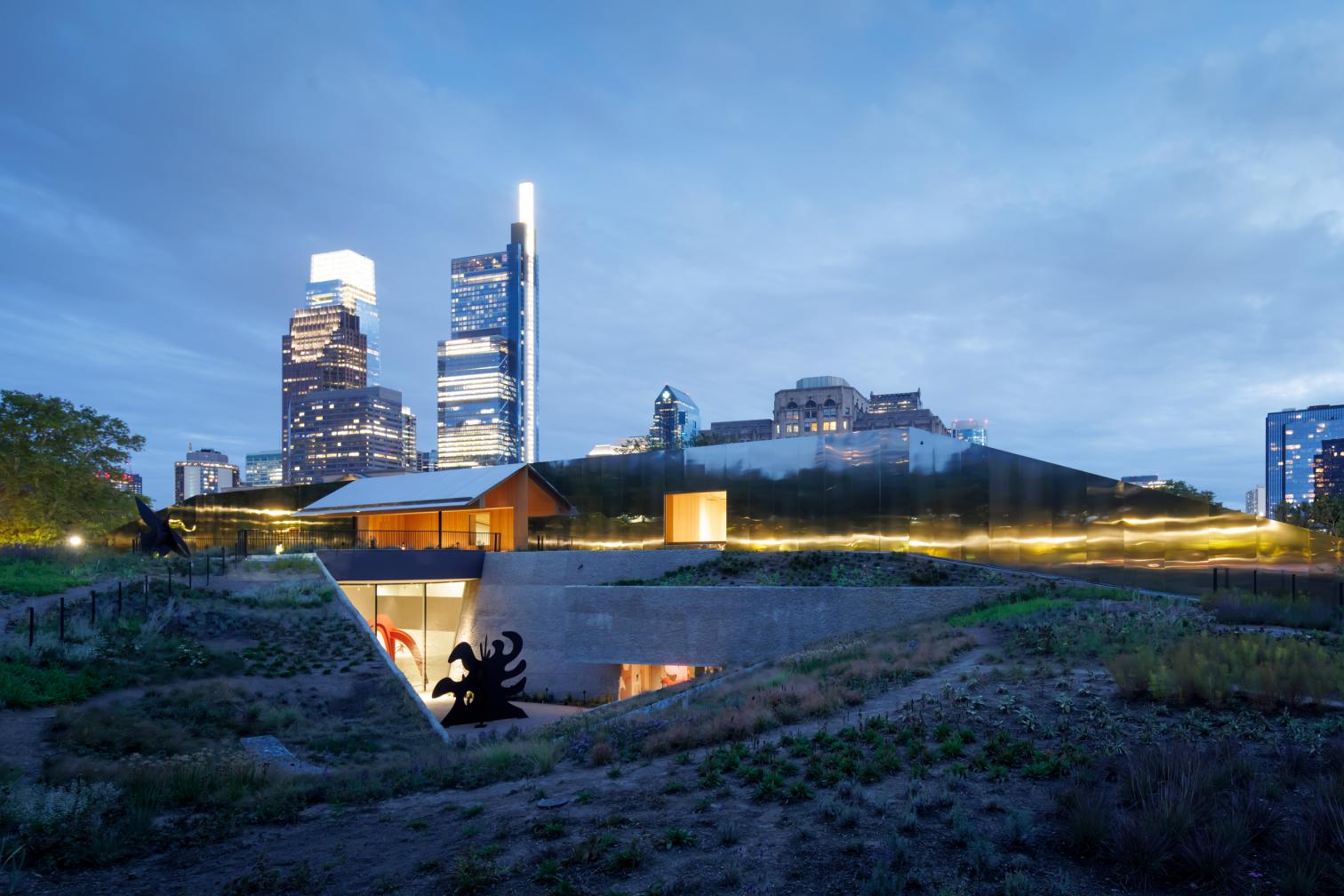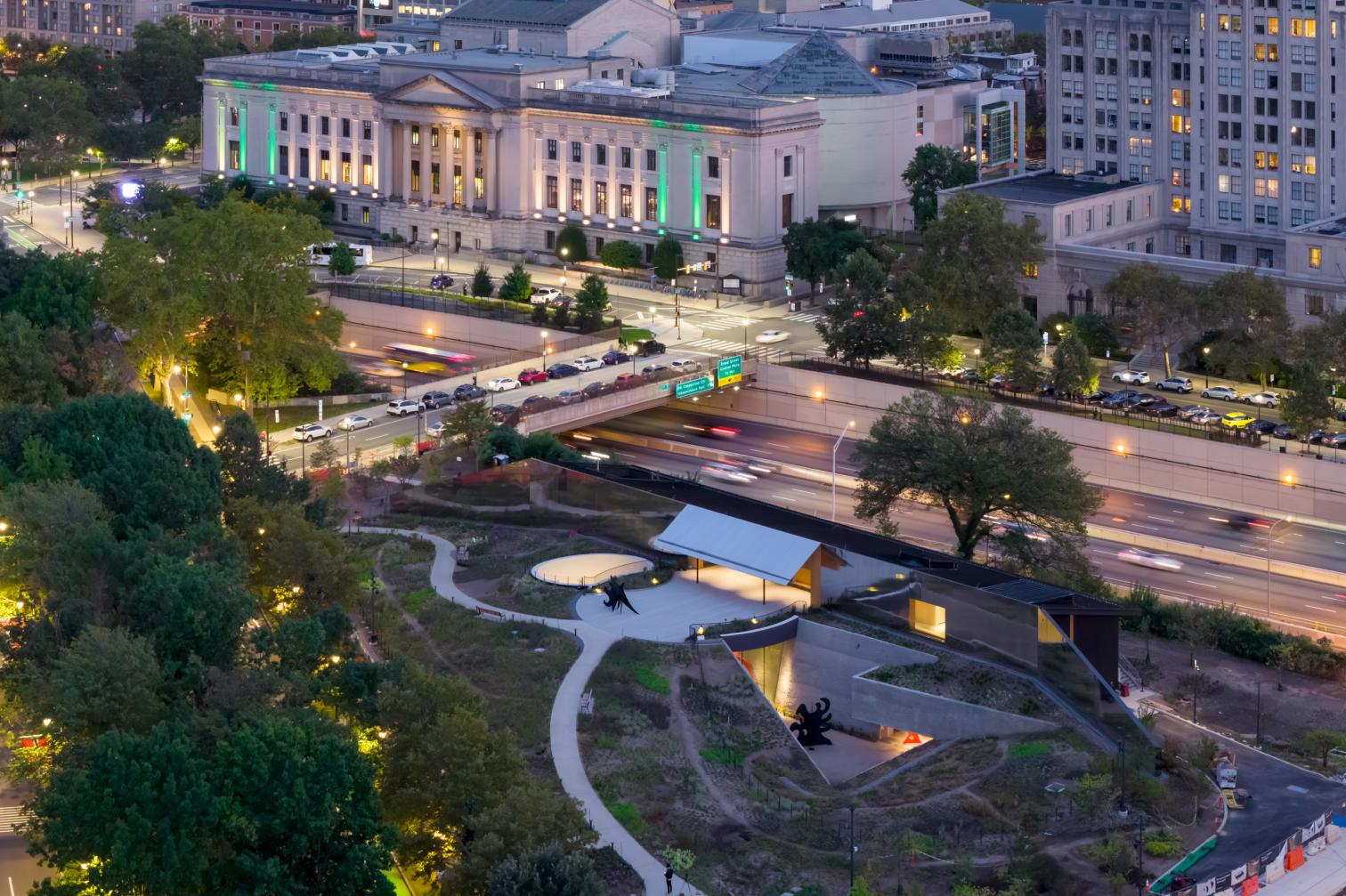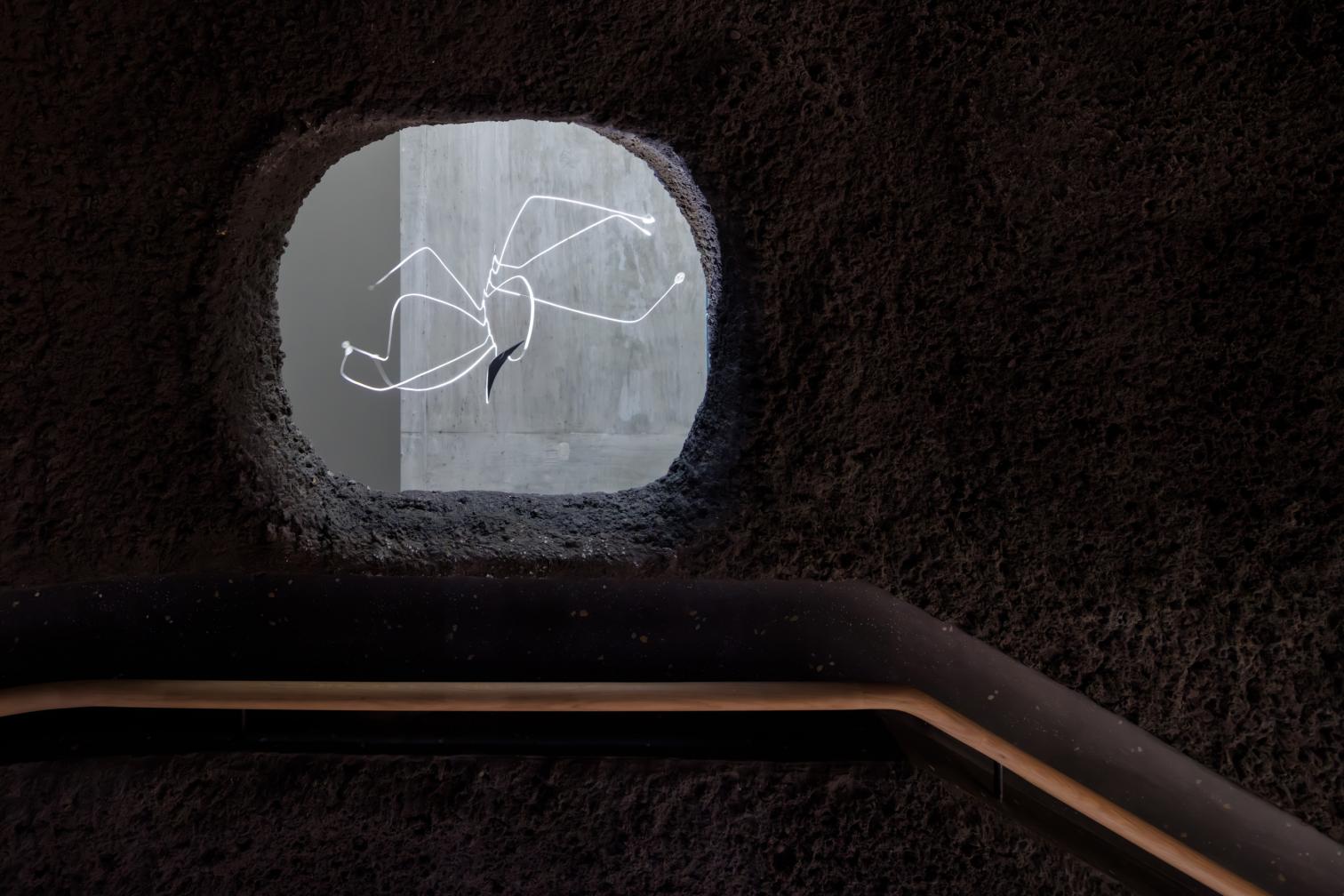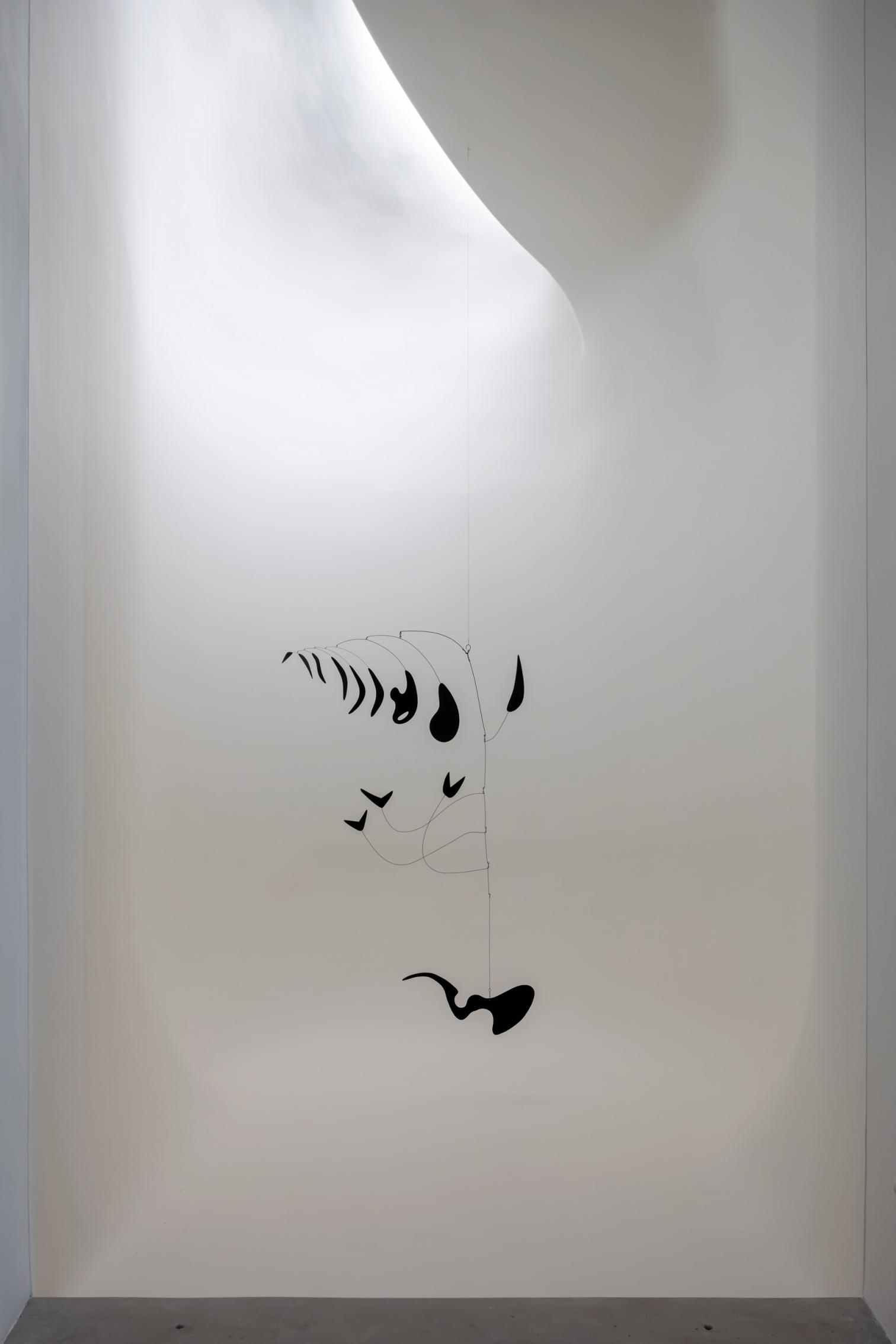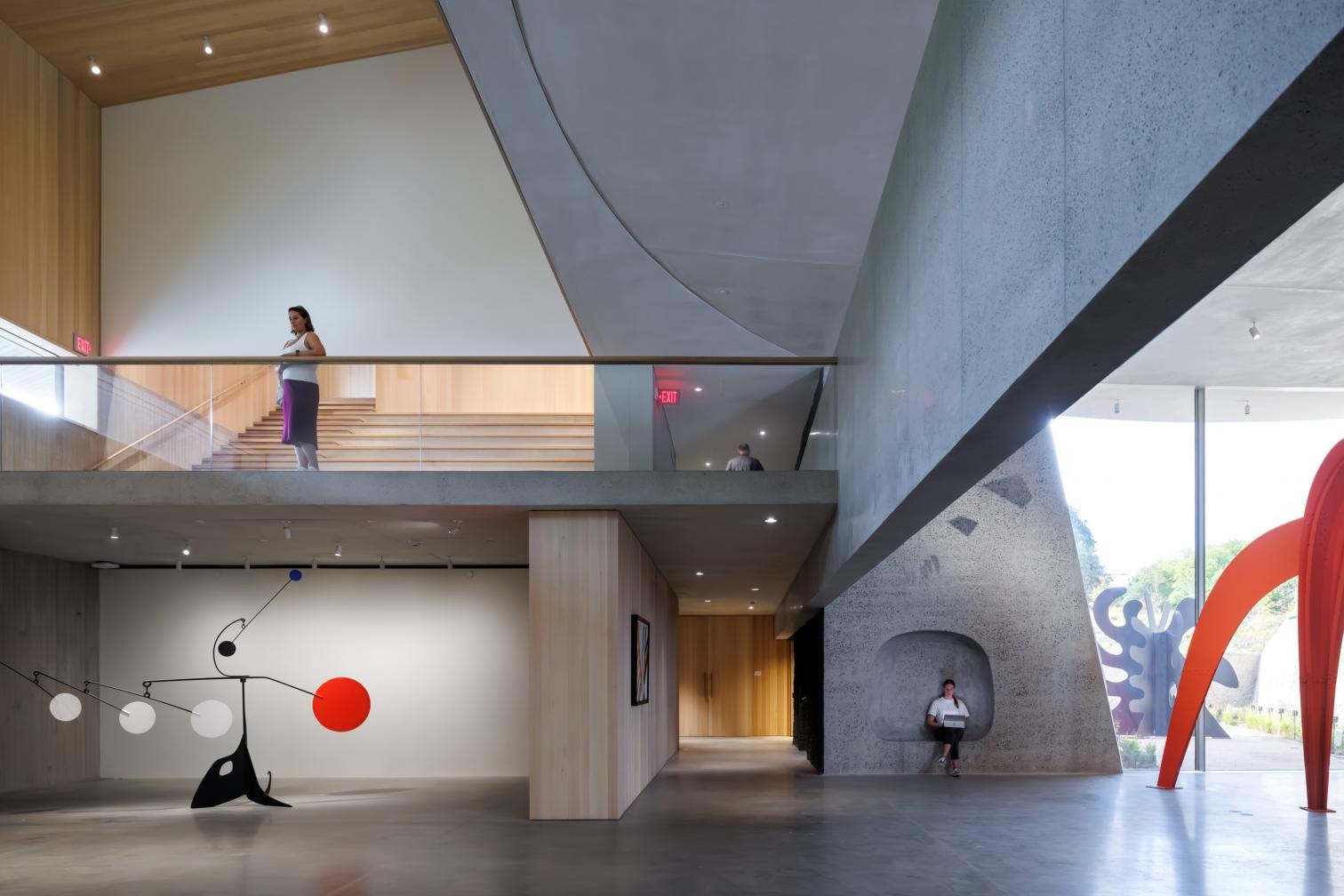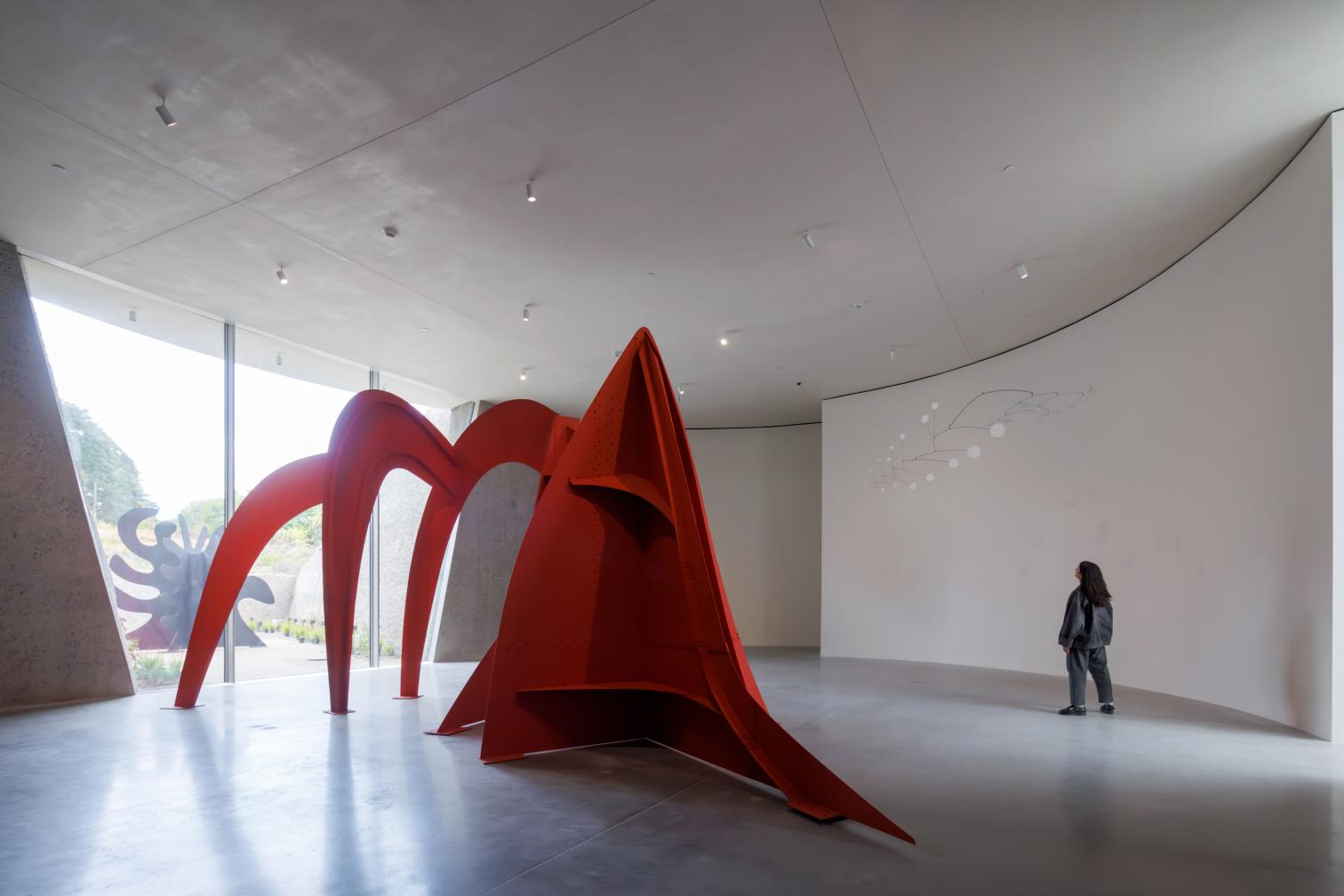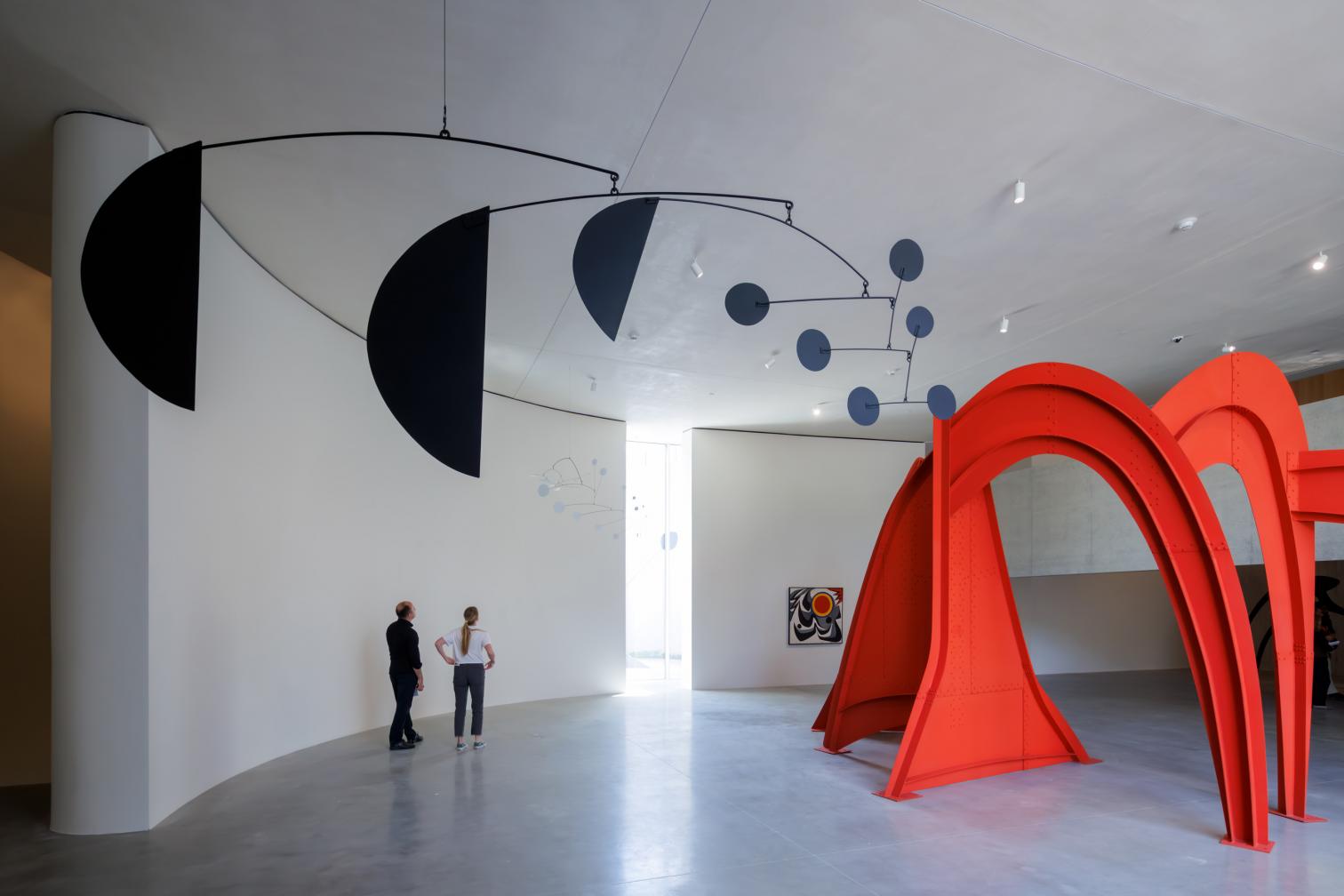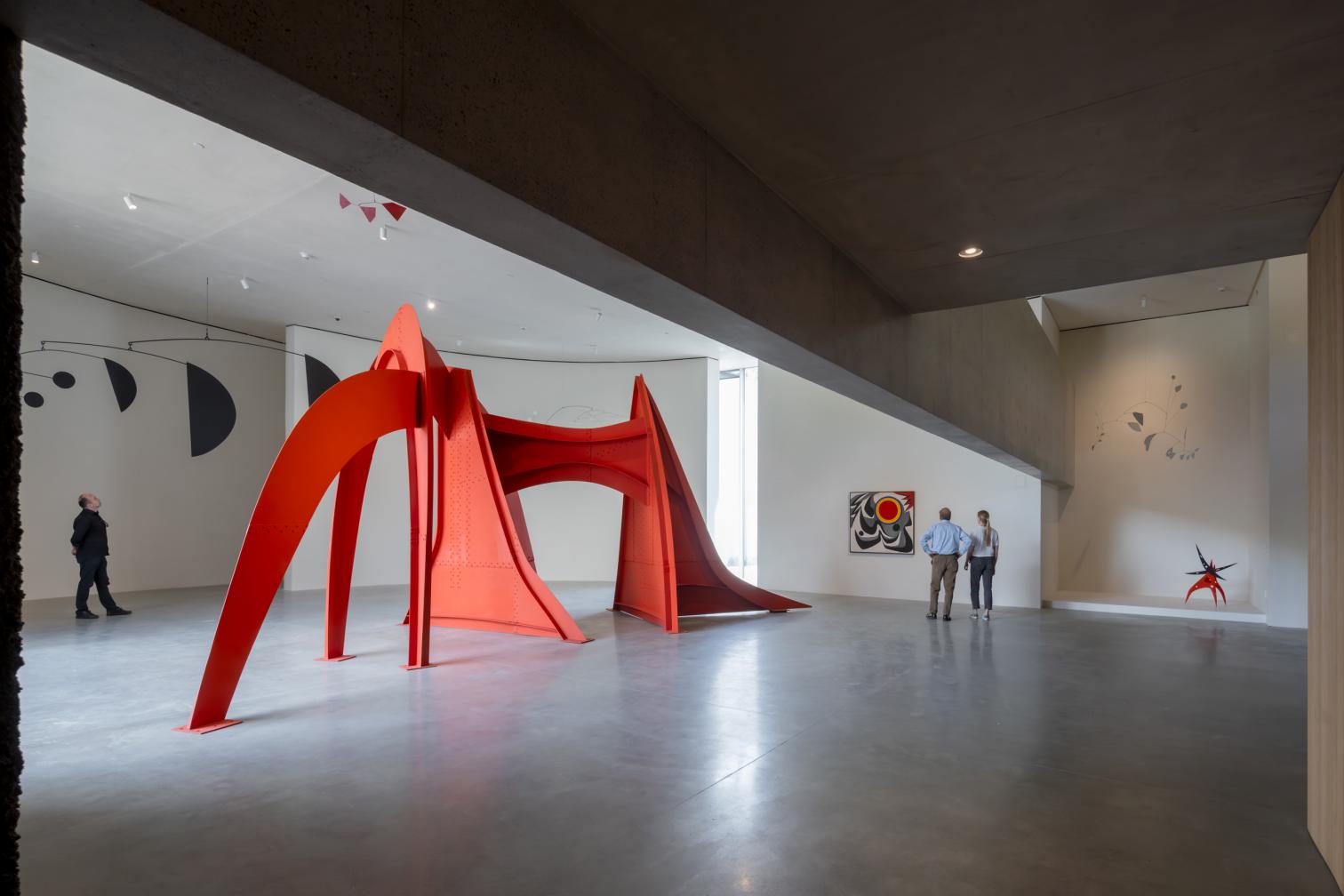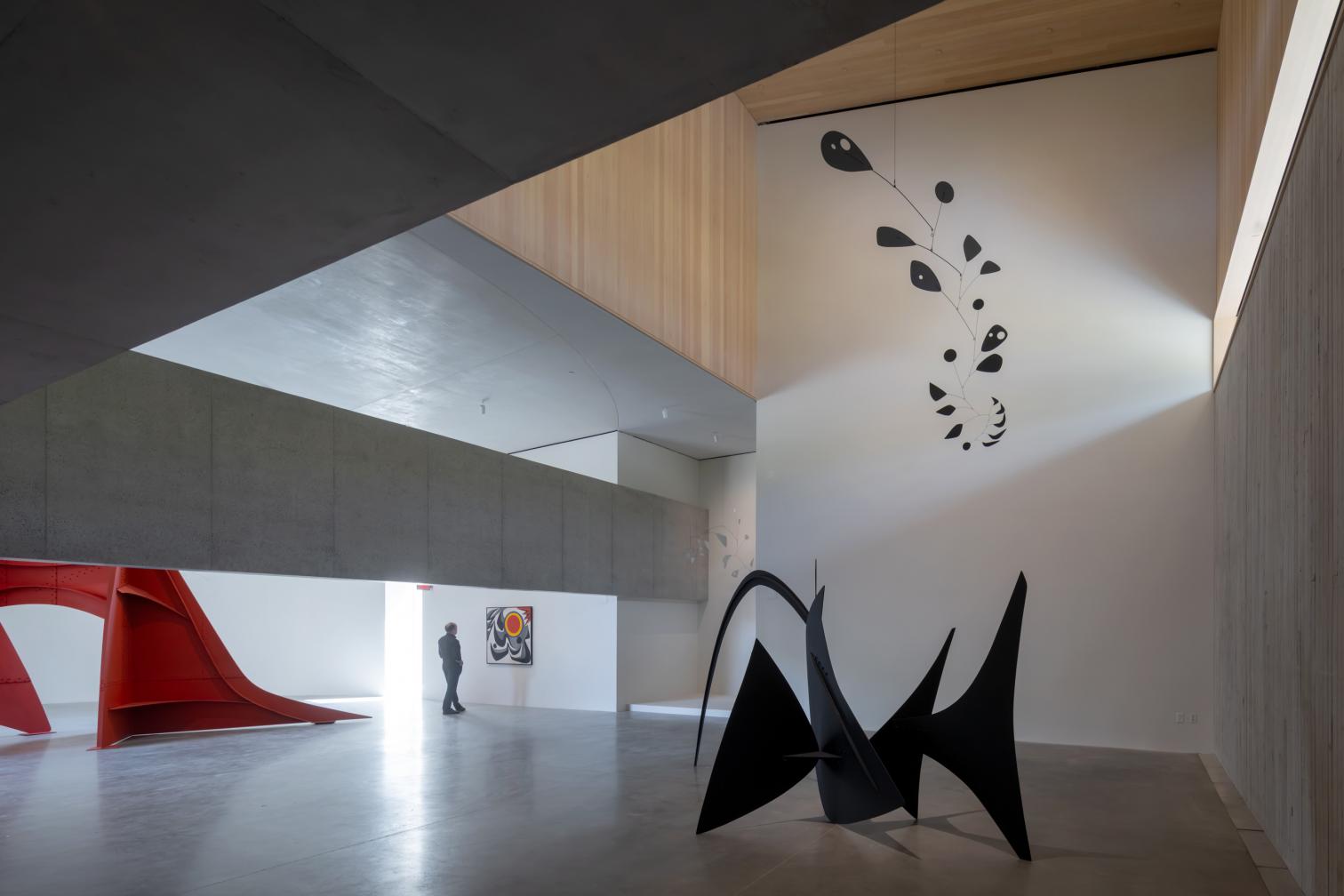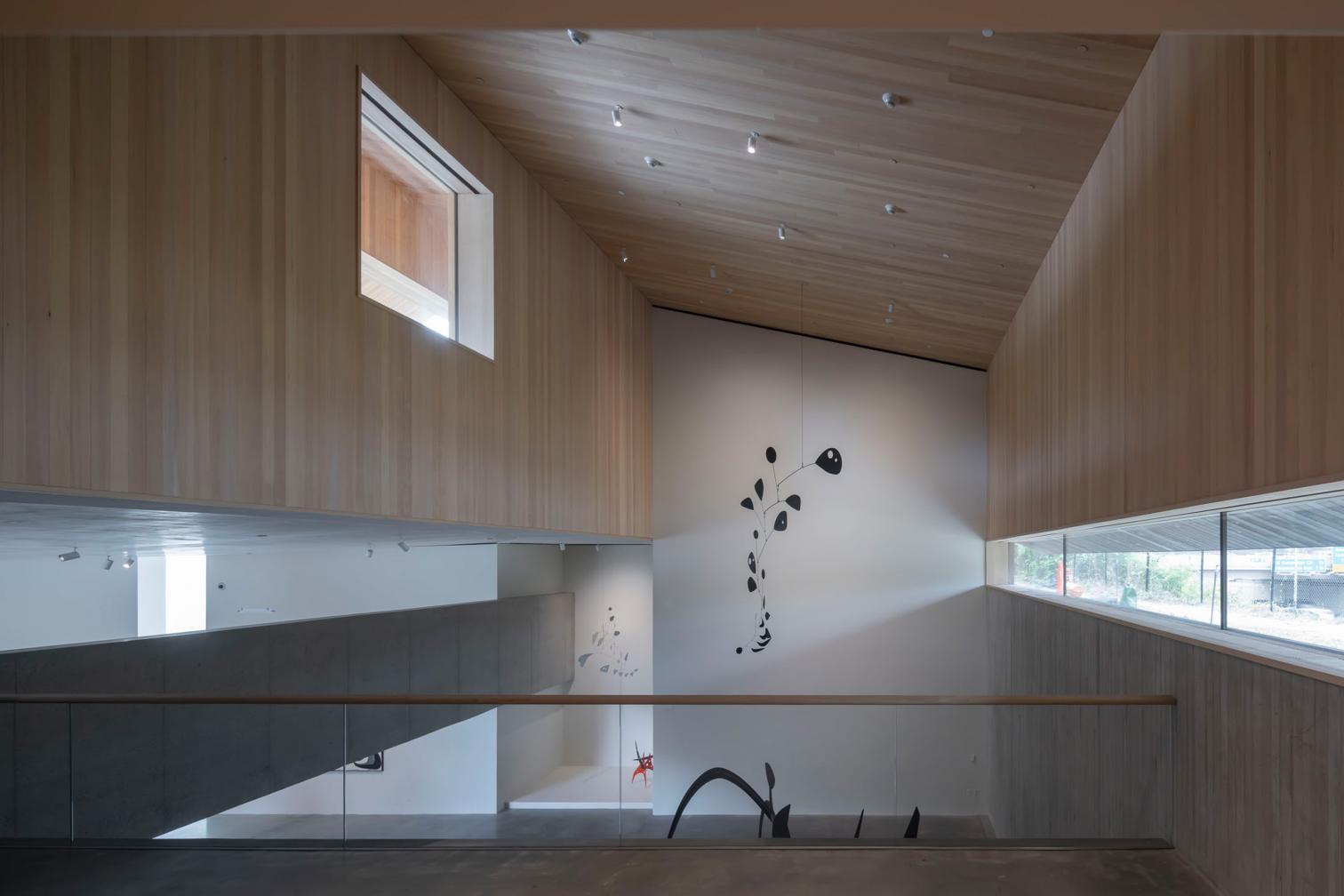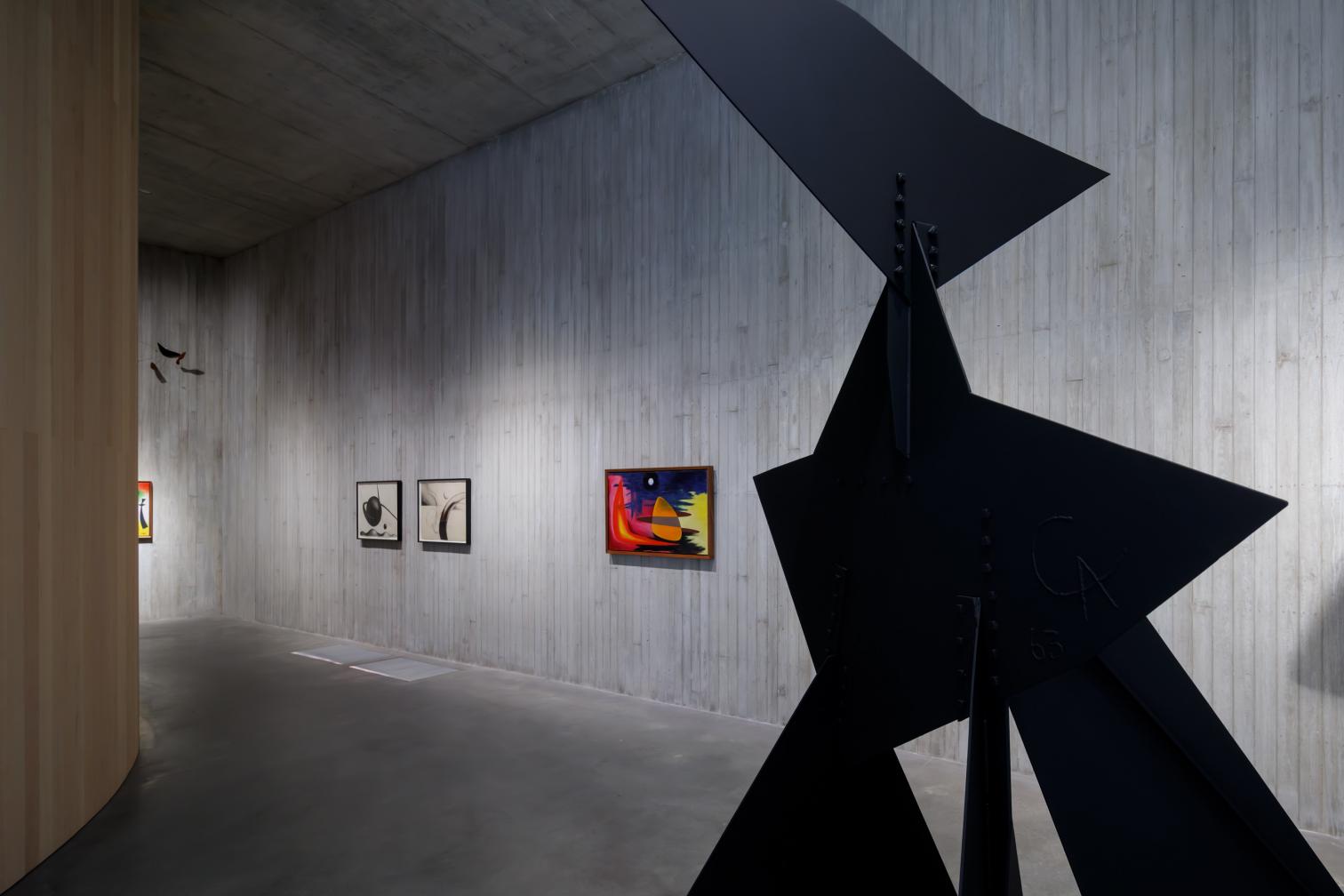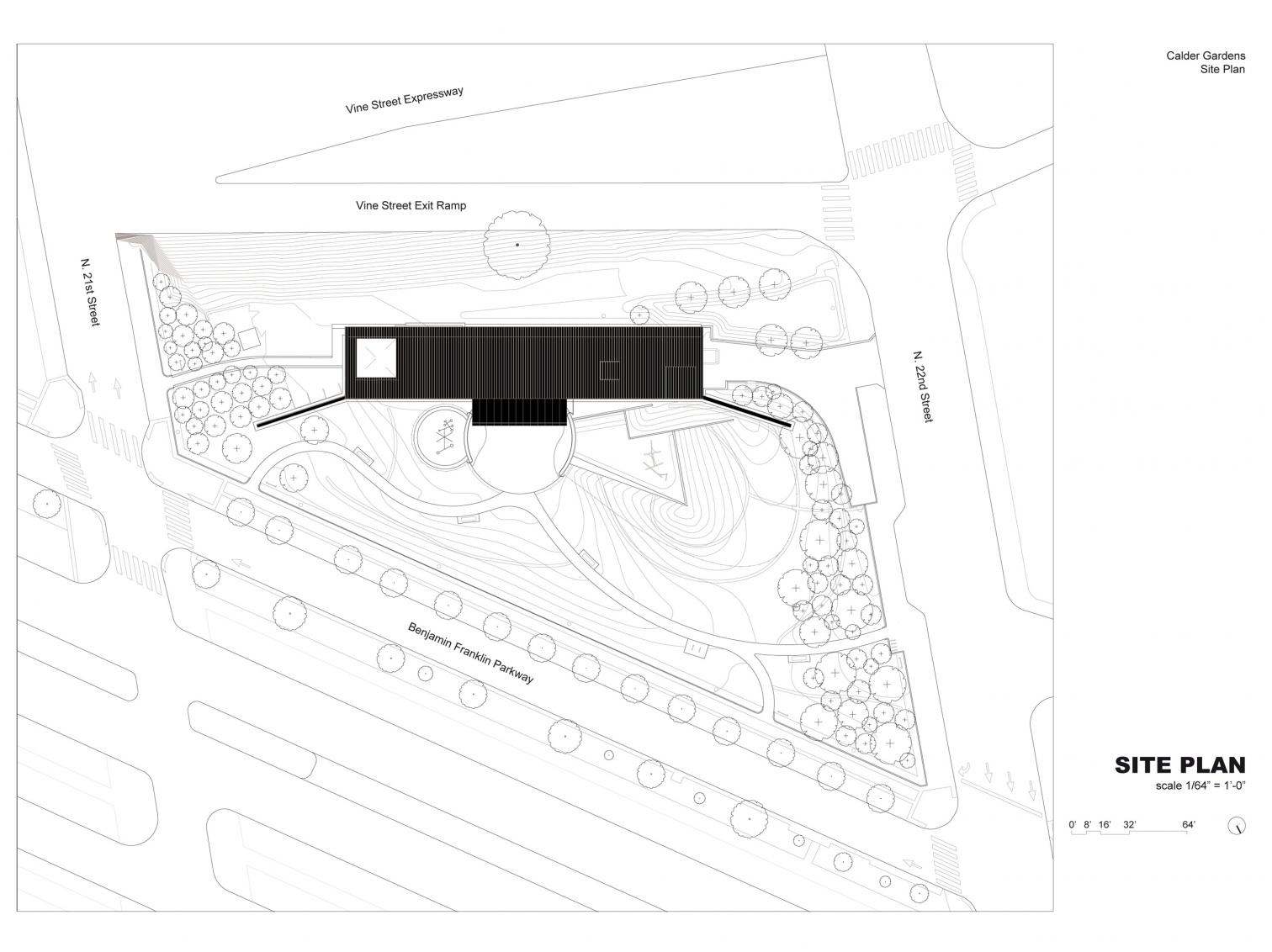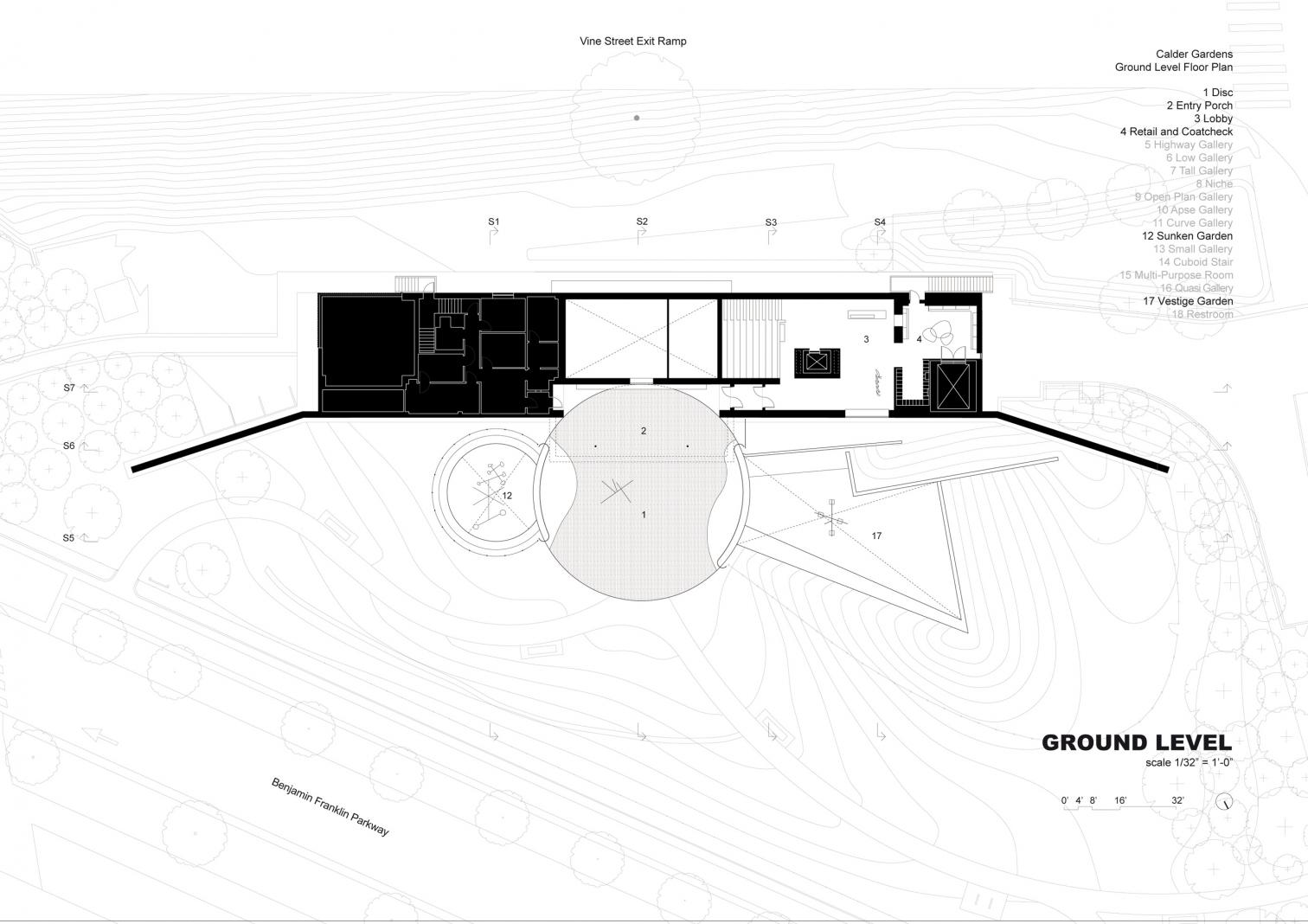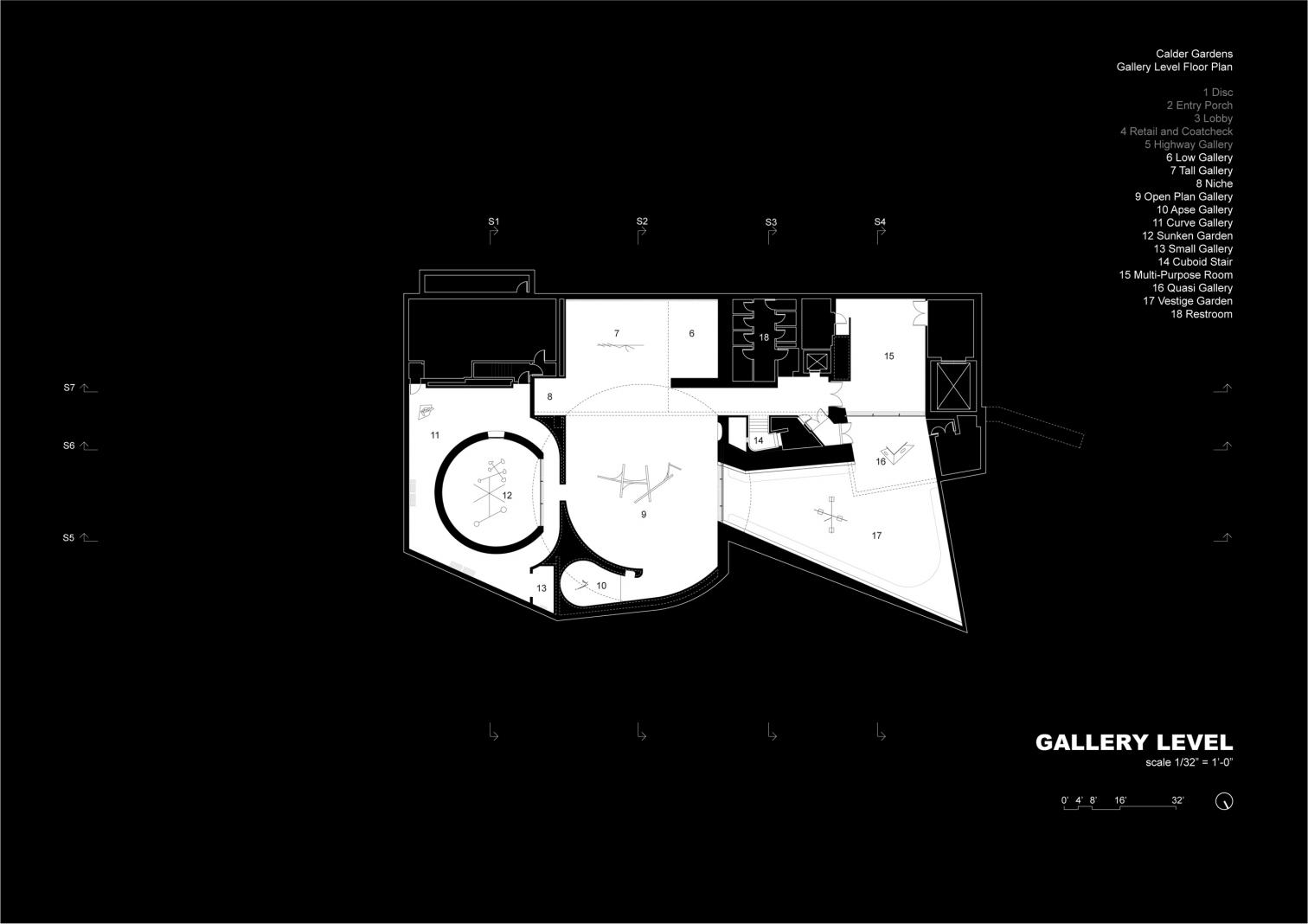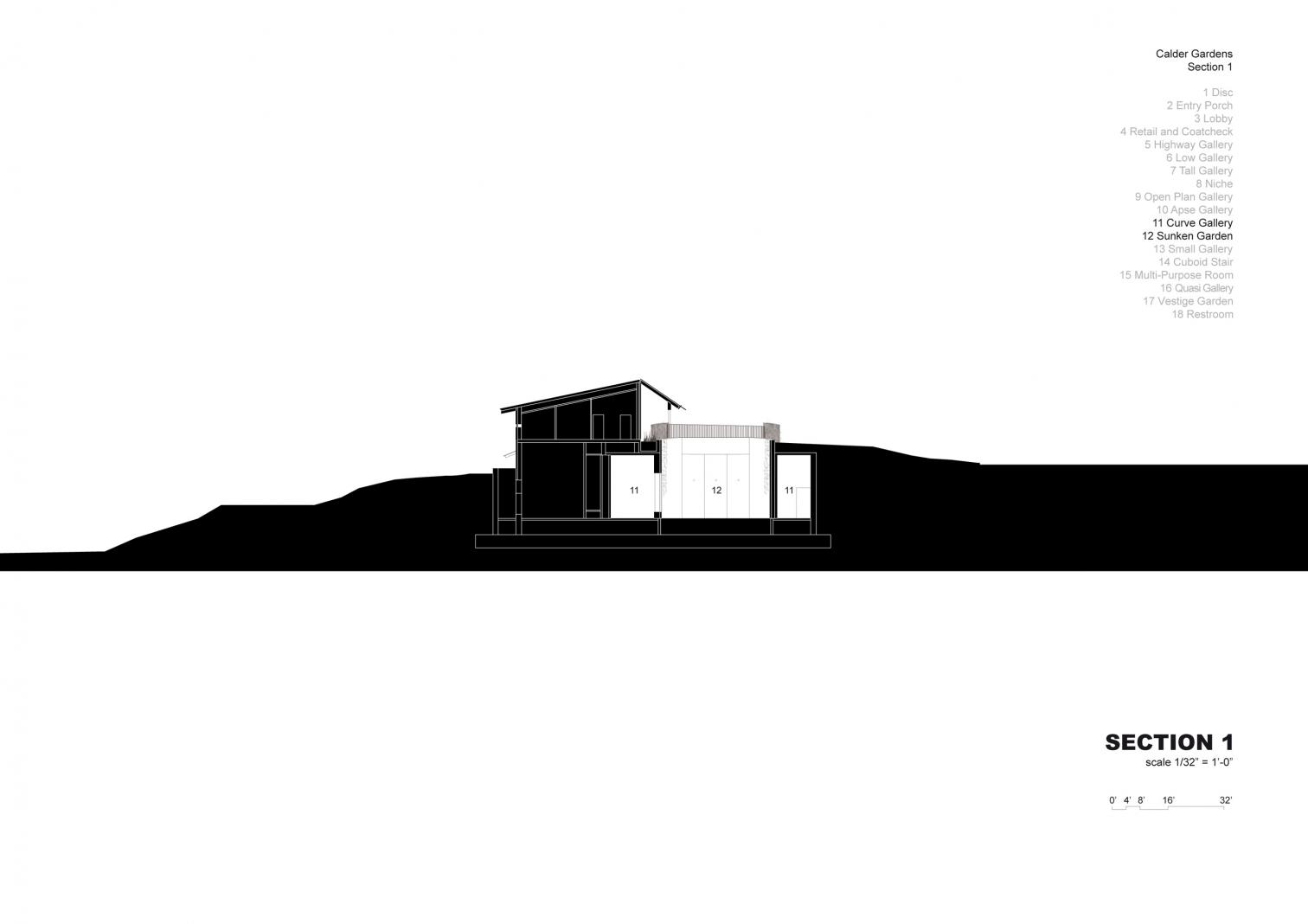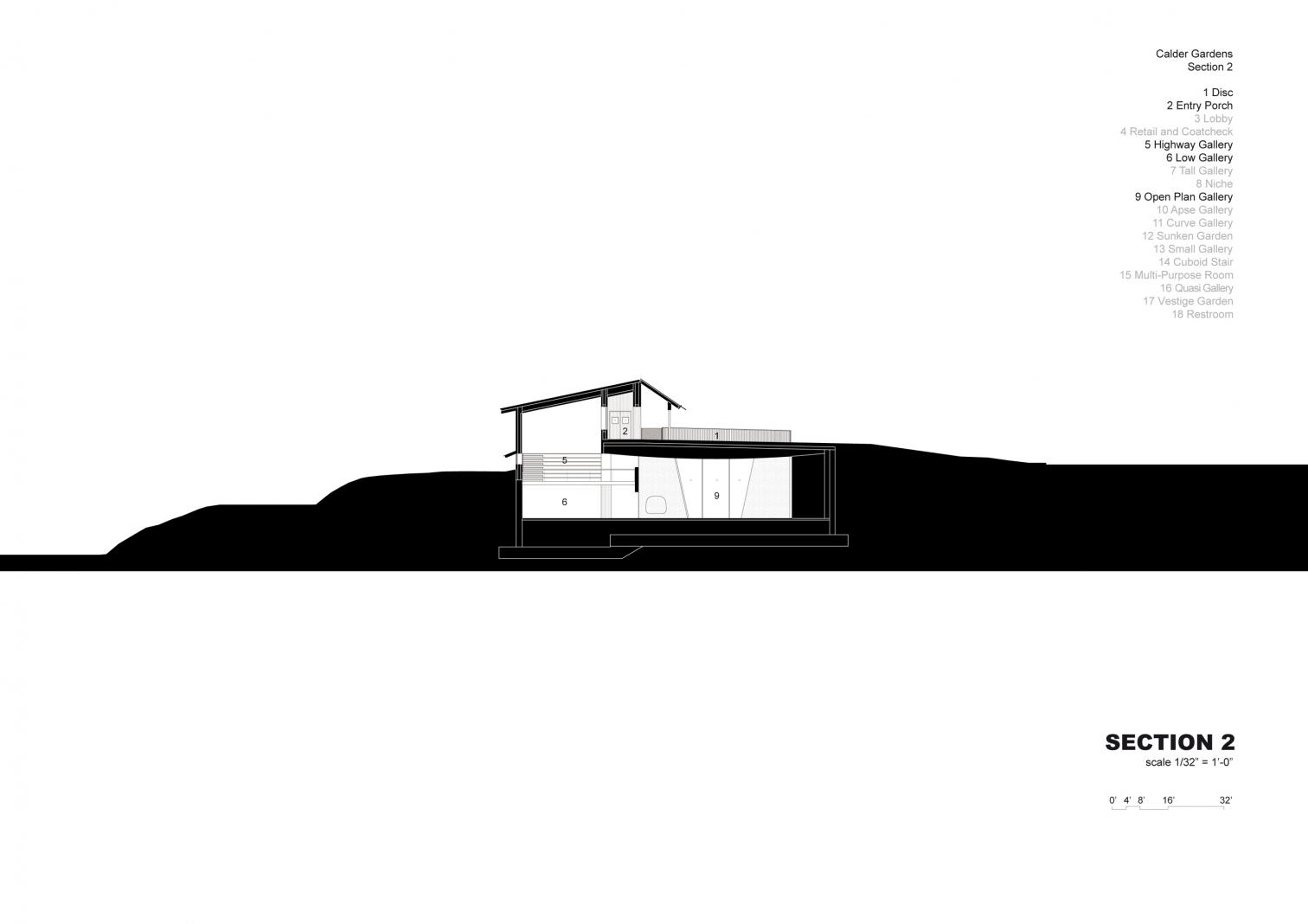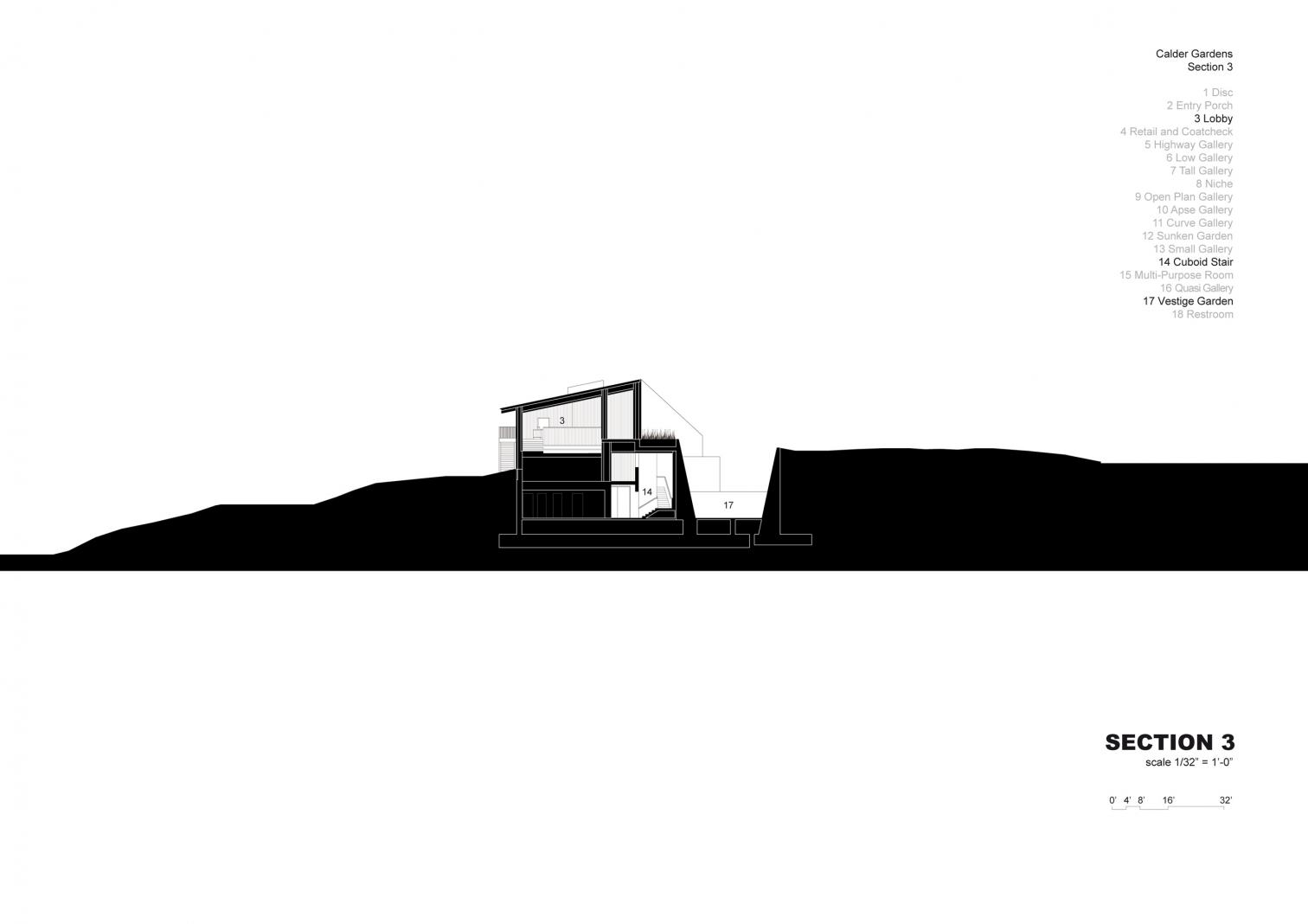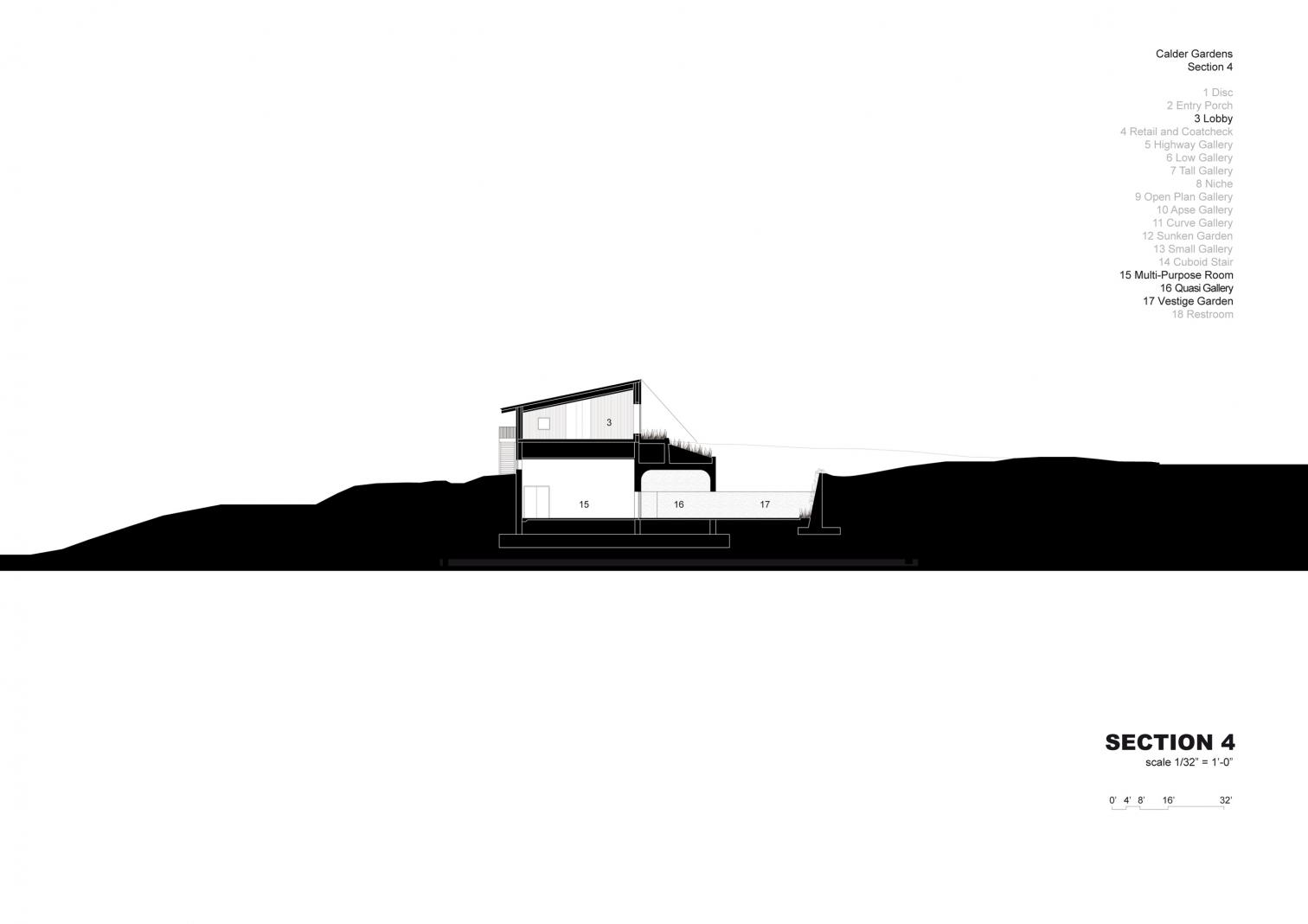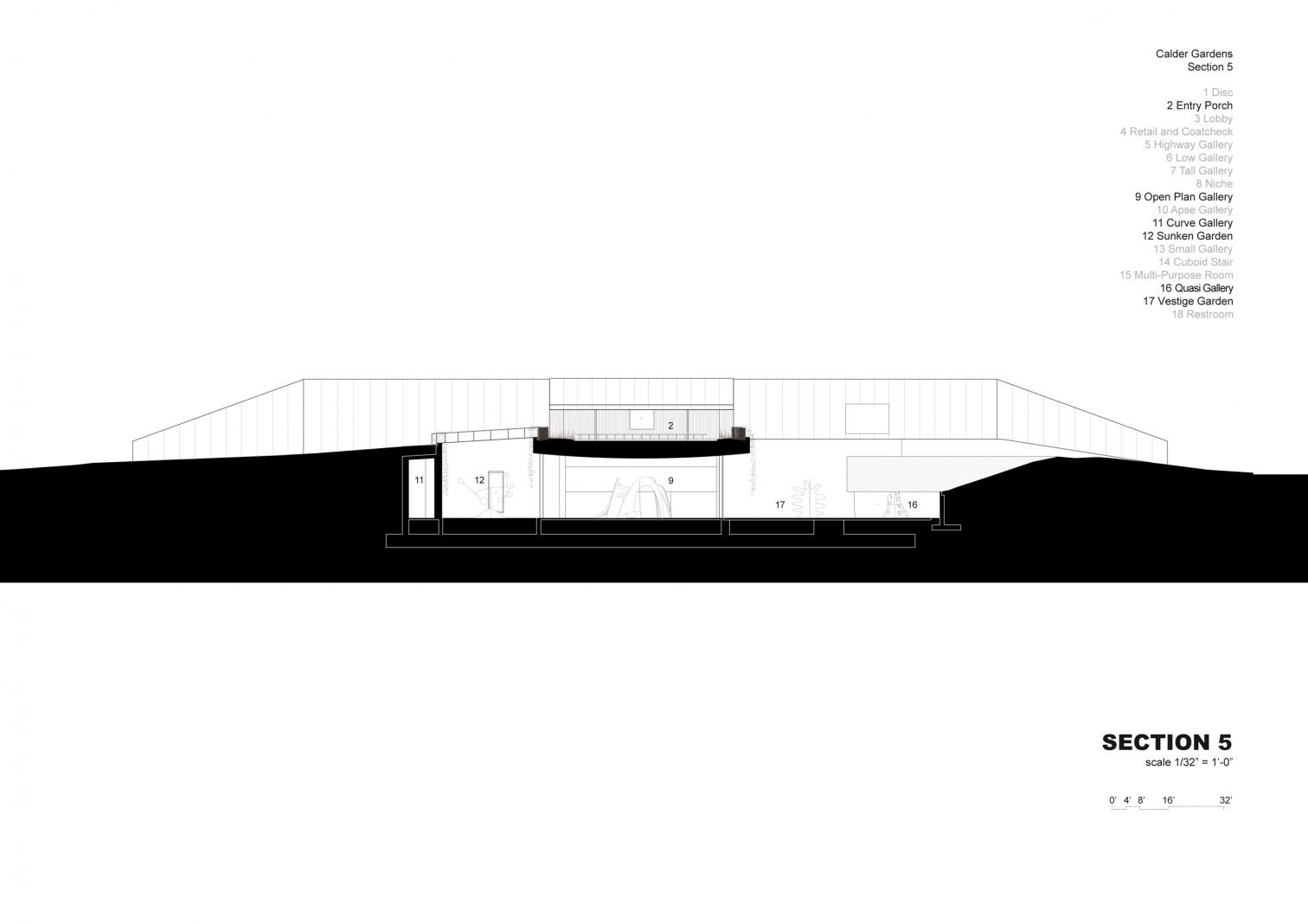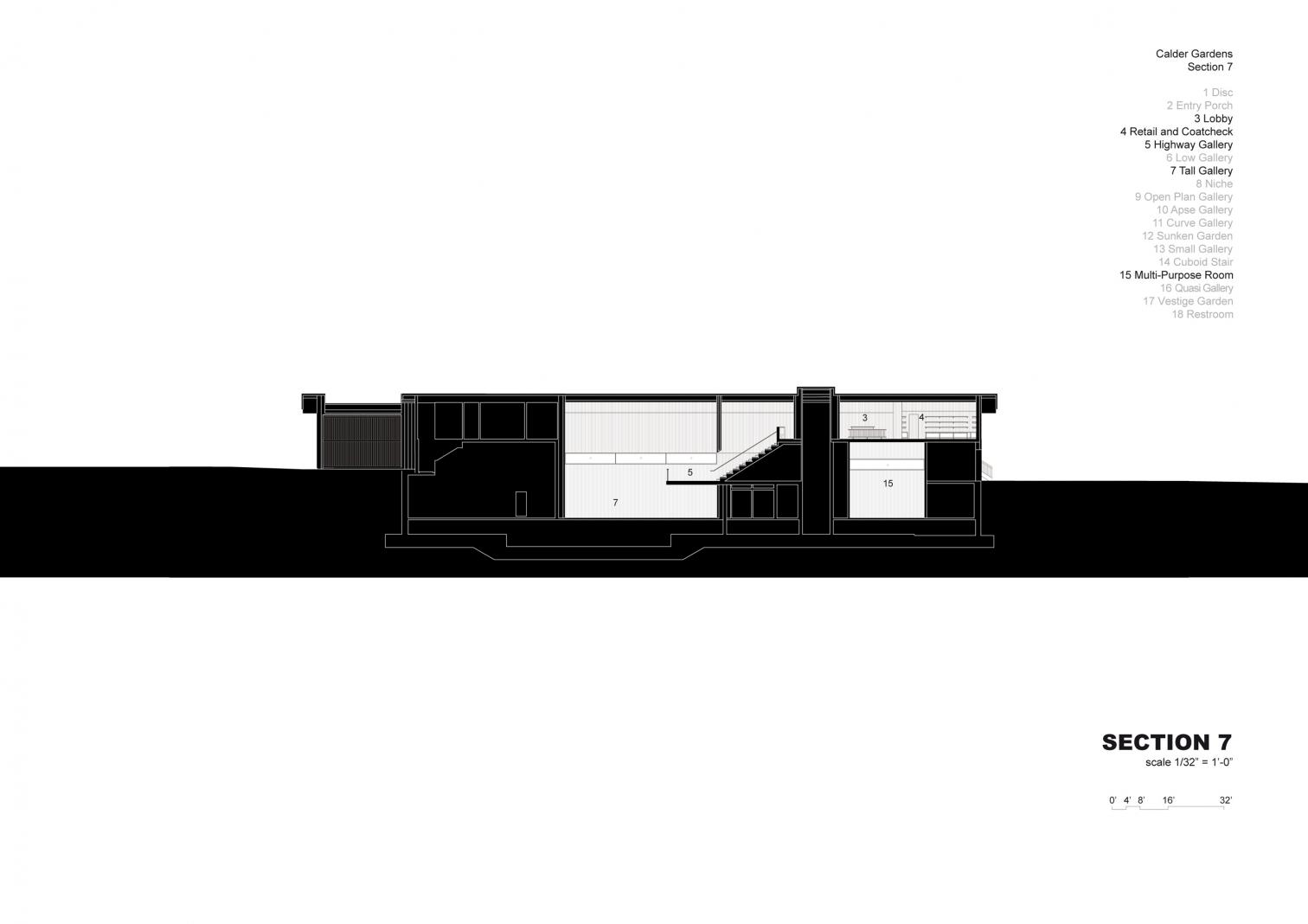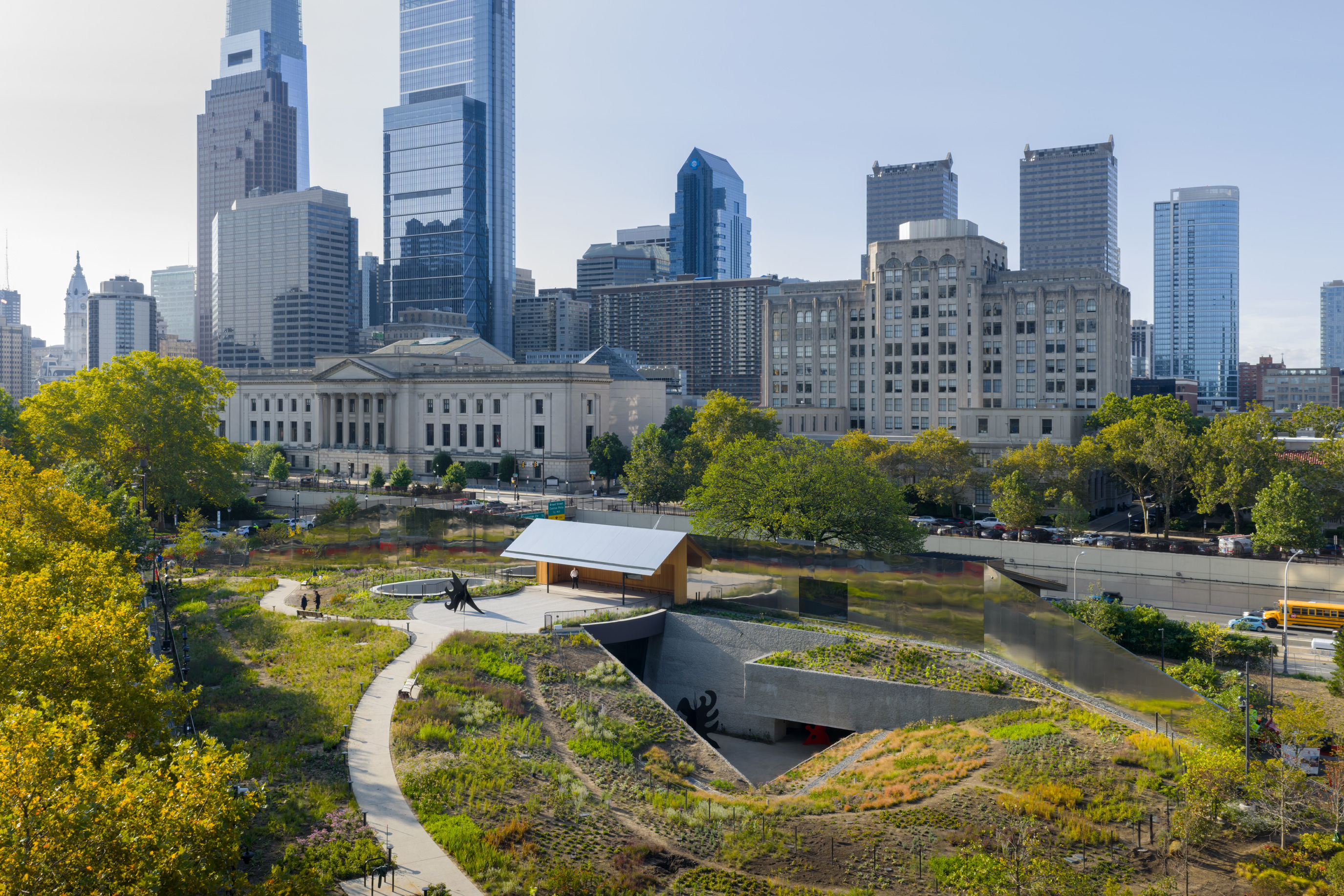Calder Gardens in Philadelphia
Herzog & de Meuron- Type Museum Landscape architecture / Urban planning Park
- Date 2025
- City Philadelphia ( Pennsylvania)
- Country United States
- Photograph Iwan Baan
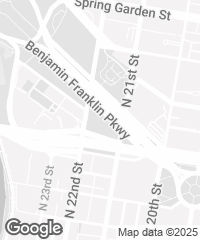
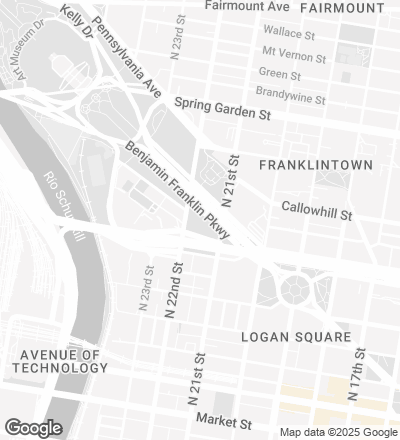
In the heart of Philadelphia, a new cultural space devoted to the sculptor Alexander Calder – born in the Pennsylanian city – opened on 21 September. Far from being a conventional museum, it provides an encounter with his work through an interplay of art, architecture, nature, people, and the urban fabric. Designed by the Swiss firm Herzog & de Meuron and the Dutch landscape designer Piet Oudolf, the complex avoids the monumentality of nearby museums, taking a more intimate, immersive approach.
The partly underground two-level building in integrated with the environs through a reflective metal coating that dilutes its edges, in such a way that the complex blends with the vegetation it stands amid. All around, the gardens planned by Oudolf generate an open-air sequence of spaces, natural galleries sculpted in a site along Benjamin Franklin Parkway, within a triangle that is a leftover from old planning for the Vine Street Expressway.
Access is through paths leading to a circular plaza where the entrance is marked by a wooden roof. On both sides of this central courtyard, which protects the lower galleries, are two lowered courts: the Sunken Garden, with its pure geometric shape, and the ‘Vestige Garden,’ with its irregular arrangement revealing traces of the location’s urban past. These spaces harbor the most delicate sculptures of the collection while bringing natural light into the surrounding exhibition spaces.
The Calder Gardens offer an experience where the form, the color, and the movement that define the sculptures are not shown as in a traditional museum. This is a garden with a building inside that gradually reveals itself like a series of differentiated spaces, with unexpected spots like the sunken gardens. The exhibition criteria defy the classical idea of galleries, and every spot – from the stairs to the corridors – is used for displaying a piece of art.
